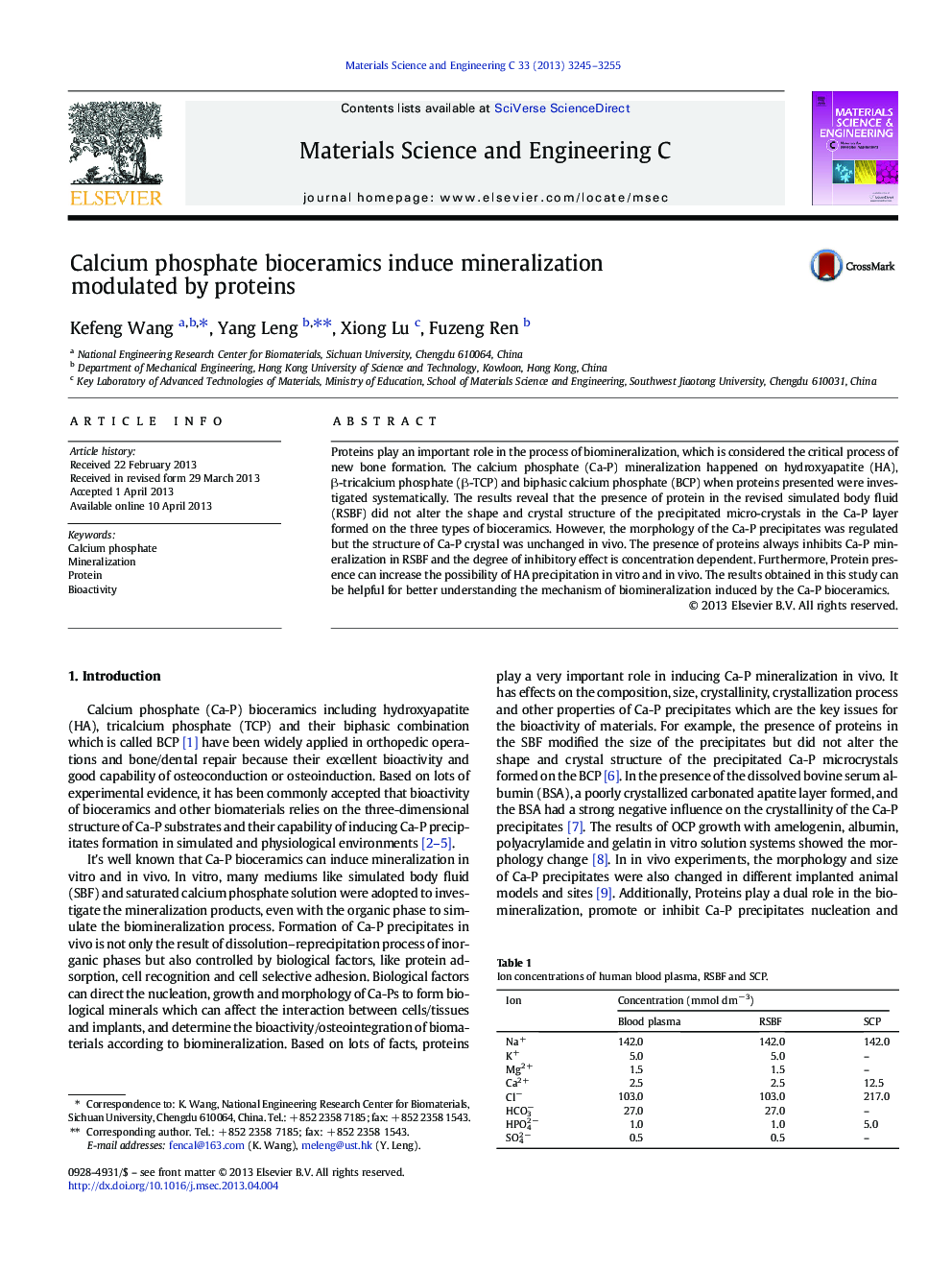| Article ID | Journal | Published Year | Pages | File Type |
|---|---|---|---|---|
| 1429171 | Materials Science and Engineering: C | 2013 | 11 Pages |
•Calcium phosphate (Ca-P) mineralization happened on Ca-P bioceramics when proteins presented were investigated systematically.•The presence of proteins in vitro has little effect on the Ca-P mineralization, including morphology/size, precipitating speed, structure and phase. The morphology of the Ca-P precipitates was regulated in vivo but the structure of Ca-P crystals was unchanged. Proteins always inhibit Ca-P mineralization in the simulated body fluid and body.•Protein presence increased the possibility of HA mineralization in vitro and in vivo.
Proteins play an important role in the process of biomineralization, which is considered the critical process of new bone formation. The calcium phosphate (Ca-P) mineralization happened on hydroxyapatite (HA), β-tricalcium phosphate (β-TCP) and biphasic calcium phosphate (BCP) when proteins presented were investigated systematically. The results reveal that the presence of protein in the revised simulated body fluid (RSBF) did not alter the shape and crystal structure of the precipitated micro-crystals in the Ca-P layer formed on the three types of bioceramics. However, the morphology of the Ca-P precipitates was regulated but the structure of Ca-P crystal was unchanged in vivo. The presence of proteins always inhibits Ca-P mineralization in RSBF and the degree of inhibitory effect is concentration dependent. Furthermore, Protein presence can increase the possibility of HA precipitation in vitro and in vivo. The results obtained in this study can be helpful for better understanding the mechanism of biomineralization induced by the Ca-P bioceramics.
